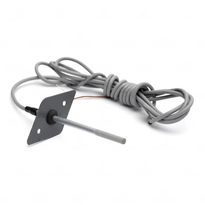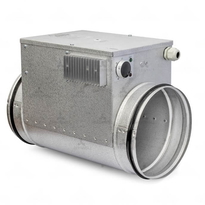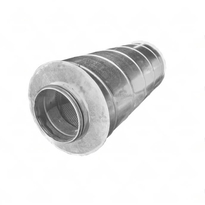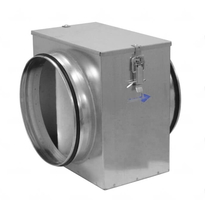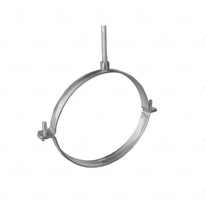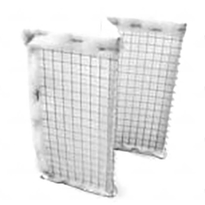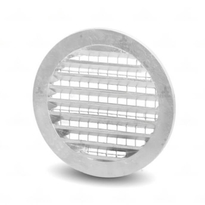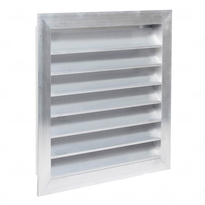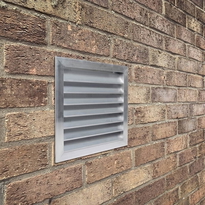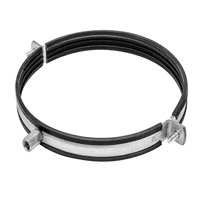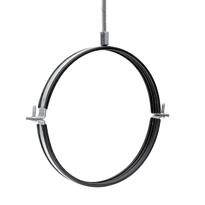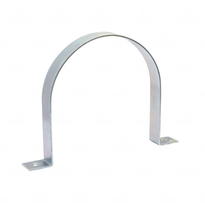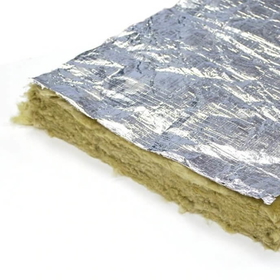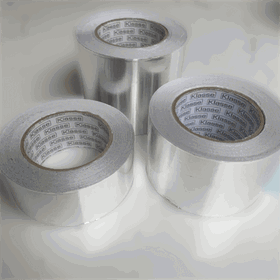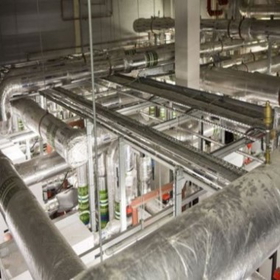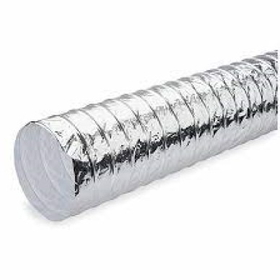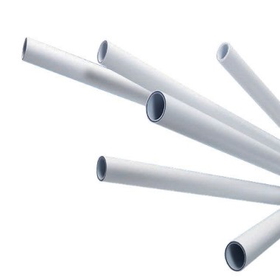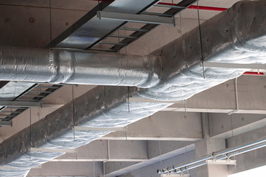Duct Fittings
Similar Categories
Duct Fittings: What You Need to Know
Duct fittings are the components that connect, shape, and direct the airflow in a duct system. They are essential for ensuring the efficiency, performance, and comfort of your heating, ventilation, and air conditioning (HVAC) system.
In this article, we will guide you through the basics of duct fittings, the types of duct fittings available, and how to choose the best duct fittings for your needs.
What are Duct Fittings?
Duct fittings are the parts that join different sections of ductwork together. They can also change the direction, shape, or size of the ducts to suit the layout and design of your building. Duct fittings can be made of various materials, such as metal, plastic, or fibreglass, depending on the application and the requirements of the system.
Some of the common functions of duct fittings are:
- To reduce or increase the airflow in a duct system by changing the cross-sectional area of the ducts.
- To split or merge the airflow in a duct system by using branches, tees, or wyes.
- To turn or bend the airflow in a duct system by using elbows, offsets, or transitions.
- To dampen or attenuate the noise and vibration in a duct system by using silencers, attenuators, or dampers.
- To filter or clean the airflow in a duct system by using filters, filter boxes, or louvres.
- To heat or cool the airflow in a duct system by using heaters, coolers, or heat exchangers.
Types of Duct Fittings
 There are many types of duct fittings available in the market, each with its own advantages and disadvantages. Some of the most common types of duct fittings are:
There are many types of duct fittings available in the market, each with its own advantages and disadvantages. Some of the most common types of duct fittings are:
- Elbows: Elbows are used to change the direction of the airflow in a duct system by 90 degrees or less. They can be either round or rectangular in shape, and they can have different angles, such as 45 degrees, 60 degrees, or 90 degrees. Elbows can also have different radiuses, such as short radius, long radius, or flat oval. The radius of an elbow affects the pressure drop and the airflow velocity in the duct system. Generally, the larger the radius, the lower the pressure drop and the higher the airflow velocity.
- Transitions: Transitions are used to change the shape or size of the ducts in a duct system. They can be either concentric or eccentric, depending on whether the centres of the ducts are aligned or not. Transitions can also be either round or rectangular, or a combination of both. Transitions can affect the airflow distribution and the pressure loss in the duct system. Generally, the smoother and more gradual the transition, the lower the pressure loss and the more uniform the airflow distribution.
- Tees: Tees are used to split or merge the airflow in a duct system. They can be either round or rectangular, and they can have different configurations, such as straight, reducing, or bullhead. Tees can also have different branch angles, such as 30 degrees, 45 degrees, or 90 degrees. The branch angle of a tee affects the pressure drop and the airflow balance in the duct system. Generally, the smaller the branch angle, the lower the pressure drop and the better the airflow balance.
- Wyes: Wyes are similar to tees, but they have a curved branch instead of a straight one. They are used to split or merge the airflow in a duct system, especially when the branch angle is less than 45 degrees. Wyes can be either round or rectangular, and they can have different branch angles, such as 15 degrees, 30 degrees, or 45 degrees. The branch angle of a wye affects the pressure drop and the airflow balance in the duct system. Generally, the smaller the branch angle, the lower the pressure drop and the better the airflow balance.
- Silencers: Silencers are used to reduce the noise and vibration in a duct system. They are usually cylindrical or rectangular in shape, and they have sound-absorbing materials inside, such as fibreglass, mineral wool, or foam. Silencers can have different lengths, diameters, and thicknesses, depending on the frequency and intensity of the noise. Silencers can also have different types, such as reactive, dissipative, or hybrid. The type of silencer affects the noise reduction and the pressure drop in the duct system. Generally, the longer and thicker the silencer, the higher the noise reduction and the higher the pressure drop.
- Filters: Filters are used to remove dust, pollen, bacteria, and other contaminants from the airflow in a duct system. They are usually rectangular or square in shape, and they have filter media inside, such as paper, cloth, or metal. Filters can have different ratings, such as MERV, HEPA, or ULPA, depending on the size and efficiency of the particles they can capture. Filters can also have different types, such as pleated, panels, or cartridges. The type of filter affects the air quality and the pressure drop in the duct system. Generally, the higher the rating and the finer the media, the better the air quality and the higher the pressure drop.
- Louvers: Louvers are used to regulate the airflow in a duct system, especially at the inlet or outlet of the system. They are usually rectangular or square in shape, and they have slats or blades that can be adjusted to control the amount and direction of the airflow. Louvers can have different materials, such as aluminium, steel, or plastic, depending on the durability and corrosion resistance of the system. Louvres can also have different types, such as fixed, adjustable, or weather. The type of louvre affects the airflow control and the pressure drop in the duct system. Generally, the more adjustable and flexible the louvre, the better the airflow control and the higher the pressure drop.
How to Choose the Best Duct Fittings for Your Needs
Choosing the best duct fittings for your needs can be a challenging task, as there are many factors to consider, such as the size, shape, layout, and design of your duct system, the airflow requirements, the noise levels, the air quality, and the budget. However, here are some general tips that can help you make the right decision:
- Plan ahead and measure carefully. Before you buy any duct fittings, you should have a clear idea of the dimensions, locations, and orientations of your ducts, as well as the airflow rates, pressures, and temperatures of your system. You should also measure the available space and clearance for the duct fittings, and make sure they fit properly and securely.
- Choose the right material and type. Depending on the application and the requirements of your system, you should choose the duct fittings that are made of the most suitable material and type. For example, if you need a durable and corrosion-resistant duct system, you should choose metal duct fittings. If you need a flexible and lightweight duct system, you should choose plastic or fibreglass duct fittings. If you need a low-noise and high-efficiency duct system, you should choose silencers and filters that match the frequency and intensity of the noise and the size and efficiency of the particles.
- Compare the performance and the cost. When you buy duct fittings, you should always compare the performance and the cost of different options. You should look for duct fittings that have the lowest pressure drop, the highest airflow balance, the highest noise reduction, and the highest air quality, while also being affordable and within your budget. You should also consider the installation and maintenance costs of the duct fittings, and choose the ones that are easy and convenient to install and maintain.
Versatile Solutions for Ventilation Projects
Diverse Applications: Duct fittings offer versatility, catering to a broad spectrum of ventilation projects across residential, commercial, and industrial sectors. Whether it's a modest extractor fan setup or a large-scale ventilation system, these fittings are tailored to meet the precise requirements of any project, ensuring optimal airflow and functionality.
Ensuring Efficiency and Maintenance: Efficient operation hinges on several key considerations. Proper sealing techniques to avert air leaks, utilization of top-grade thermally insulated materials, and meticulous alignment of fittings are pivotal factors for maintaining an efficient ventilation system. Regular inspection and maintenance routines are crucial, encompassing tasks like checking for obstructions, ensuring insulation integrity, and promptly repairing any damaged fittings to sustain the system's effectiveness and longevity. Duct fittings seamlessly integrate into various ventilation setups, complementing different fan types, extractor fans, and ventilation pipes, underscoring their adaptability across diverse ventilation configurations.
Where to Buy Duct Fittings Online
 If you are looking for a reliable and reputable online store that sells high-quality and affordable duct fittings, you should check out our website Buy Insulation Online. We at Buy Insulation Online are a UK-based online store, that specializes in selling insulation and HVAC materials, including duct fittings. We have a wide range of duct fittings available, such as:
If you are looking for a reliable and reputable online store that sells high-quality and affordable duct fittings, you should check out our website Buy Insulation Online. We at Buy Insulation Online are a UK-based online store, that specializes in selling insulation and HVAC materials, including duct fittings. We have a wide range of duct fittings available, such as:
- Duct heater batteries: These are electric heaters that are installed in the ducts to heat the airflow in the system. They have different power ratings, voltages, and sizes, depending on the heating requirements of the system. They are easy to install and operate, and they have safety features such as overheat protection and thermal cut-out.
- Ventilation attenuators: These are circular duct silencers that are used to reduce the noise and vibration in the duct system. They have different lengths, diameters, and thicknesses, depending on the noise reduction requirements of the system. They are made of galvanized steel and have sound-absorbing materials inside, such as mineral wool or foam.
- Duct-mounted air filter boxes: These are rectangular boxes that are installed in the ducts to filter the airflow in the system. They have different sizes and ratings, depending on the air quality requirements of the system. They are made of galvanized steel and have filter media inside, such as paper, cloth, or metal. They are easy to access and replace, and they have a pressure gauge to indicate the filter condition.
- Duct clamps: These are metal clamps that are used to secure and seal the ducts and the duct fittings in the system. They have different sizes and types, depending on the shape and size of the ducts and the duct fittings. They are made of galvanized steel and have rubber gaskets to prevent air leakage and noise transmission.
- W3 filter for duct-mounted air filter box: This is a pleated filter that is used to replace the filter media in the duct-mounted air filter box. It has a MERV 13 rating, which means it can capture particles as small as 0.3 microns, such as dust, pollen, bacteria, and smoke. It is made of synthetic fibre and has a large surface area to increase the dust-holding capacity and airflow efficiency.
- External weather louvres: These are rectangular or square louvres that are installed at the inlet or outlet of the duct system to protect the system from rain, snow, wind, and debris. They have different sizes and materials, depending on the durability and the corrosion resistance of the system. They are made of aluminium, steel, or plastic and have slats or blades that can be fixed or adjustable to control the amount and direction of the airflow.
We offer fast and free delivery, secure payment, and excellent customer service at Buy Insulation Online. We also have a blog that provides useful tips and information about insulation and HVAC materials. You can visit our website at Buy Insulation Online to browse our products and place your order.
Conclusion
Duct fittings are important components of a duct system that connect, shape, and direct the airflow in the system. They can also improve the efficiency, performance, and comfort of your HVAC system by reducing the noise, filtering the air, and heating or cooling the air.
There are many types of duct fittings available, such as elbows, transitions, tees, wyes, silencers, filters, and louvres, each with its own advantages and disadvantages. You should choose the duct fittings that suit your needs, preferences, and budget, and that match the size, shape, layout, and design of your duct system.
You should also buy the duct fittings from a reliable and reputable online store, such as us at Buy Insulation Online, we offer high-quality and affordable duct fittings, as well as fast and free delivery, secure payment, and excellent customer service.
Frequently Asked Questions
Q: What are duct fittings and why are they important?
A: Duct fittings are components used in the installation of ducting systems for ventilation. They include items such as connectors, vents, and channels, and are essential for ensuring the efficient and effective operation of the ventilation system.
Q: What is the purpose of flexible ducting in a ventilation system?
A: Flexible ducting is used in ventilation systems to provide a versatile and easily manoeuvrable solution for directing airflow. It allows for greater flexibility in the installation process, particularly in spaces where rigid ducting may be difficult to implement.
Q: How do I determine the right size of duct fittings for my ventilation system?
A: The size of duct fittings, such as connectors and vents, should be chosen based on the specific requirements of your ventilation system. Factors include the airflow volume, the dimensions of the space, and the type of fan or extractor being used.
Q: What are the benefits of insulating duct fittings?
A: Insulating duct fittings helps to prevent condensation and heat loss within the ventilation system. This can improve energy efficiency, reduce the risk of mould growth, and contribute to maintaining optimal indoor air quality.
